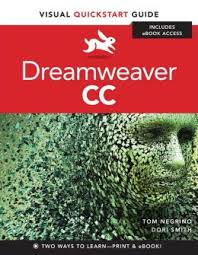Adobe Dreamweaver CC Review
Dreamweaver CC, a modern version of Abode enhances the fluid-grid feature by supporting HTML5 structural elements such as Sections and Articles. The existing subscribers to the Creative Cloud service will find the update available to install automatically as part of the set of available tools, alongside all-new versions of Photoshop, Illustrator, Edge Reflow and Flash. Alongside a variety of upgrades and improvements, this version of Dreamweaver features a couple of handy new features. With the previous HTML5 and CSS3 features having matured nicely, CC brings updated support for modern web standards. The CSS inspector making way for a new visual CSS designer and has been completely overhauled. You can quickly determine and alter the properties affecting a particular element. It saves time as it outputs vendor-prefixed versions of style rules where necessary. The template Fluid Grid Layout options are also new and are designed to allow you to use a combination of fluid grids and @media queries to support Responsive Web Design and multiple devices with a single website. Adobe could have rested on its laurels when updating Dreamweaver to its latest incarnation in the subscription-based Creative Cloud service as Dreamweaver CC. Part of Adobe's Creative Suite 6, Adobe's advanced website editor already had little or no serious competition as a tool for creating and maintaining today's multiplatform websites in its previous incarnation. Ready-to-use "fluid grid" Web layouts that use CSS to reshape webpages automatically according to the screen size were introduced by Dreamweaver CS6. A single site use with phones, tablets, and desktops without the complex CSS hand-coding previously required became easy to make. The fluid-grid feature adds an equally effort-saving tool. You only need to click and drag to modify complex CSS code while seeing the results in real-time as the CSS Designer uses an interactive graphic interface for modifying CSS properties like shadows and curved corners. It is easy to create eye-catching designs by using Web-based fonts which can be downloaded from Adobe's servers while the browser loads a page. Dreamweaver also gets a simplified and more easily customizable interface like the rest of the Creative Cloud suite. It works identically under both Windows and Mac OS X.
Even if you're a non-professional, Dreamweaver is a professional-level tool that's worth having. The multitude of menus and property panels in the default layout may intimidate first-time Dreamweaver users. It soon becomes clear how to use these to switch quickly between displays that show how a webpage will look when printed or when displayed on different size screens and to get quick access to advanced controls over CSS elements. Advanced Web designers can click on a menu of JavaScript-based UI widgets into their code to create pop-up dialogs, date-pickers, accordion-style menus, and everything else in the current repertory of UI effects. Flexible HTML5-compliant sites that look good on any platform can be created by less advanced users. You can click on items in an Insert panel to add elements like templates, standard HTML features and multimedia, starting from either a blank page or sample layout. The default screen is split into a code pane and a WYSIWYG design pane. You can choose one or the other, or make the design pane "Live" to view media content like video. Adobe's proprietary technologies like Flash over open standards like HTML5 video is not favored by Dreamweaver but it gives equal support for both. It provides a better-looking and more usable HTML5 video player than its built-in Flash player. The app first creates a page that contains a grid of vertical columns that are visible in Dreamweaver when you build a page with Dreamweaver's fluid grid feature and not when the page appears in a browser.



